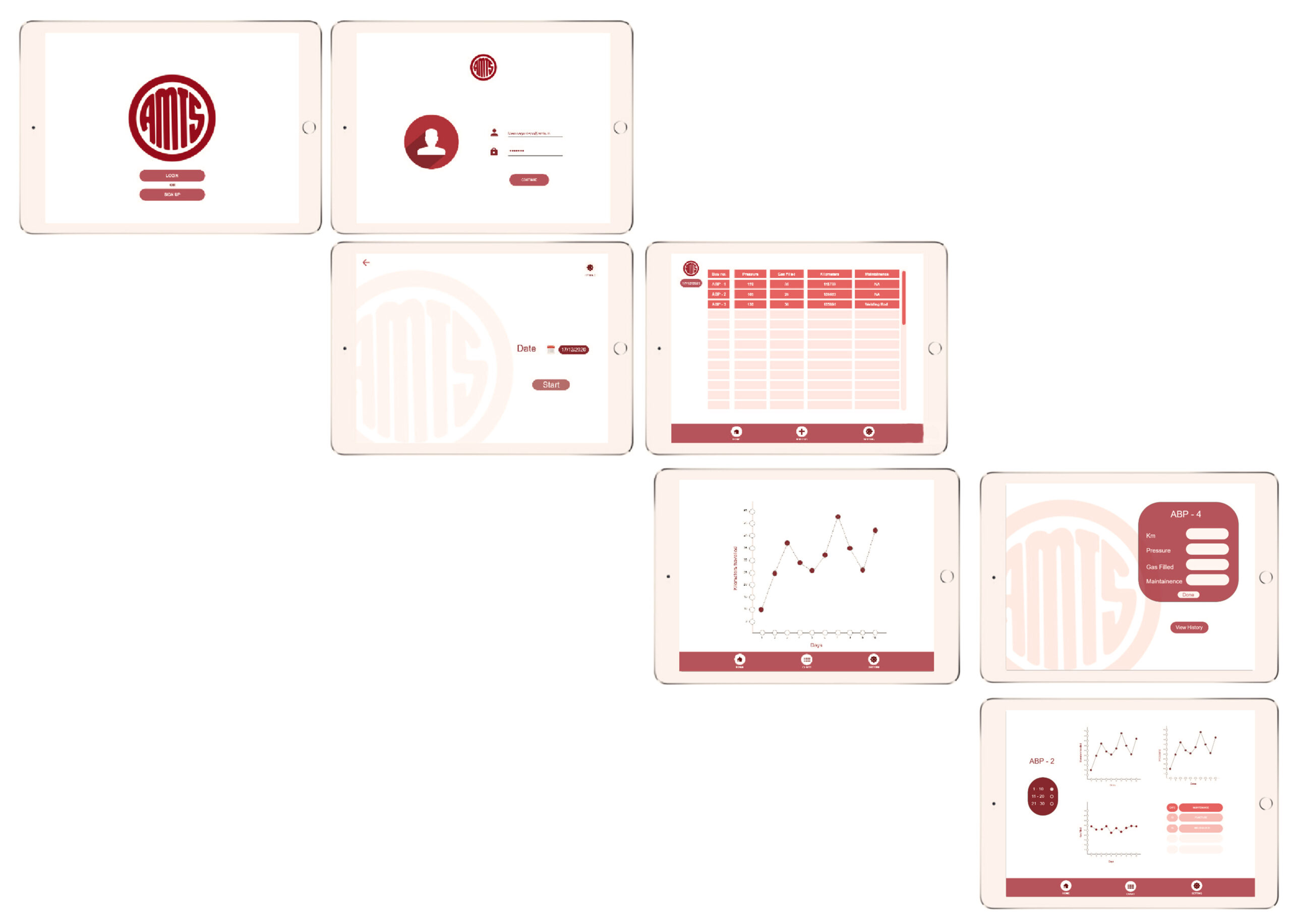Initial Research
In this class of system design, we approached various problems that were faced by the city in the form of various modes of transportation.
Basic Research
The first thought was to collectively understand the meaning of the term “Public Utility”. In the initial research, we took a deep dive into the history of Ahmedabad Municipal Transport Services(AMTS).
In the second phase, we took a dive into the stakeholder, infrastructure, and the various touchpoints of a common AMTS bus.
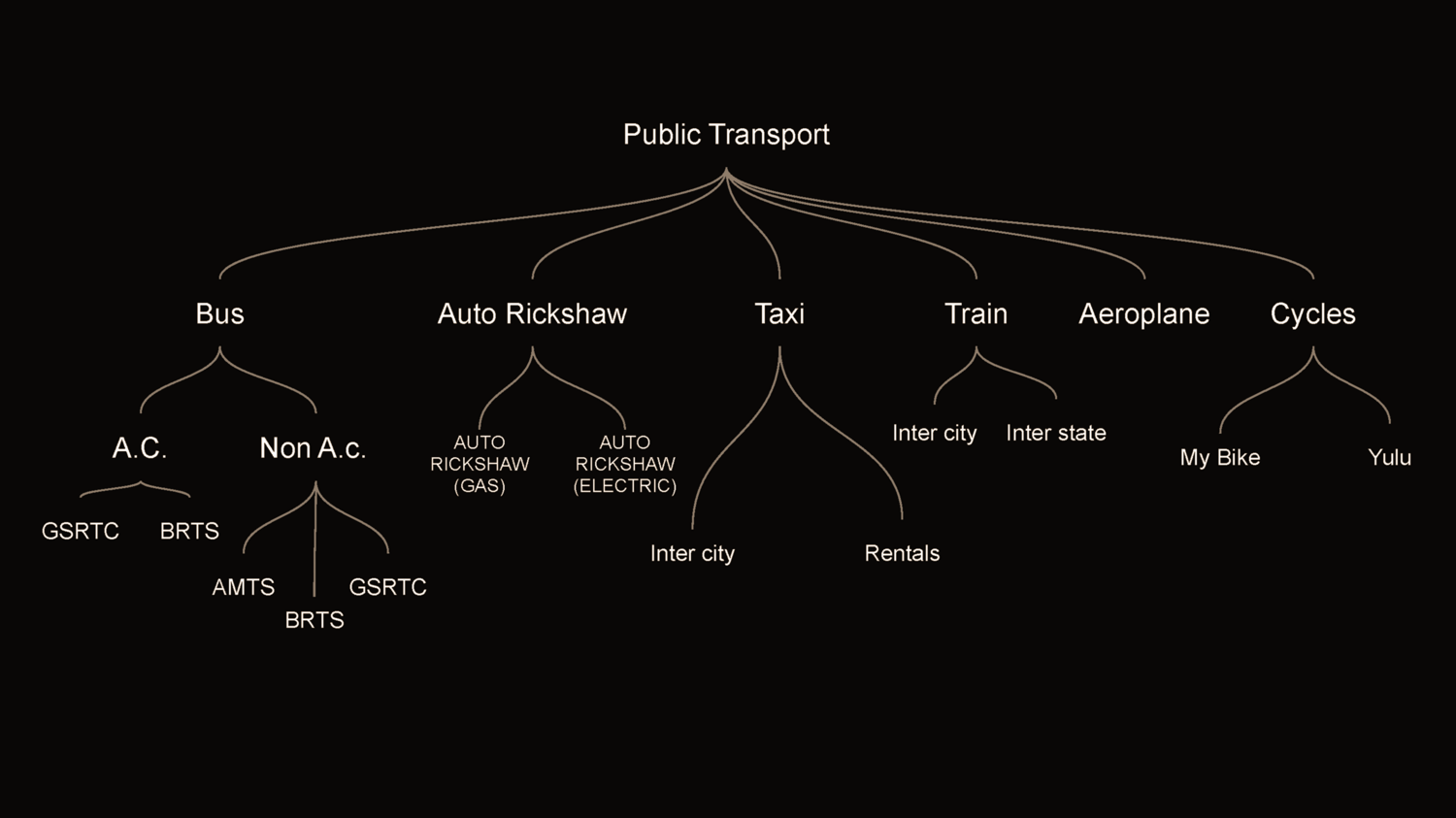

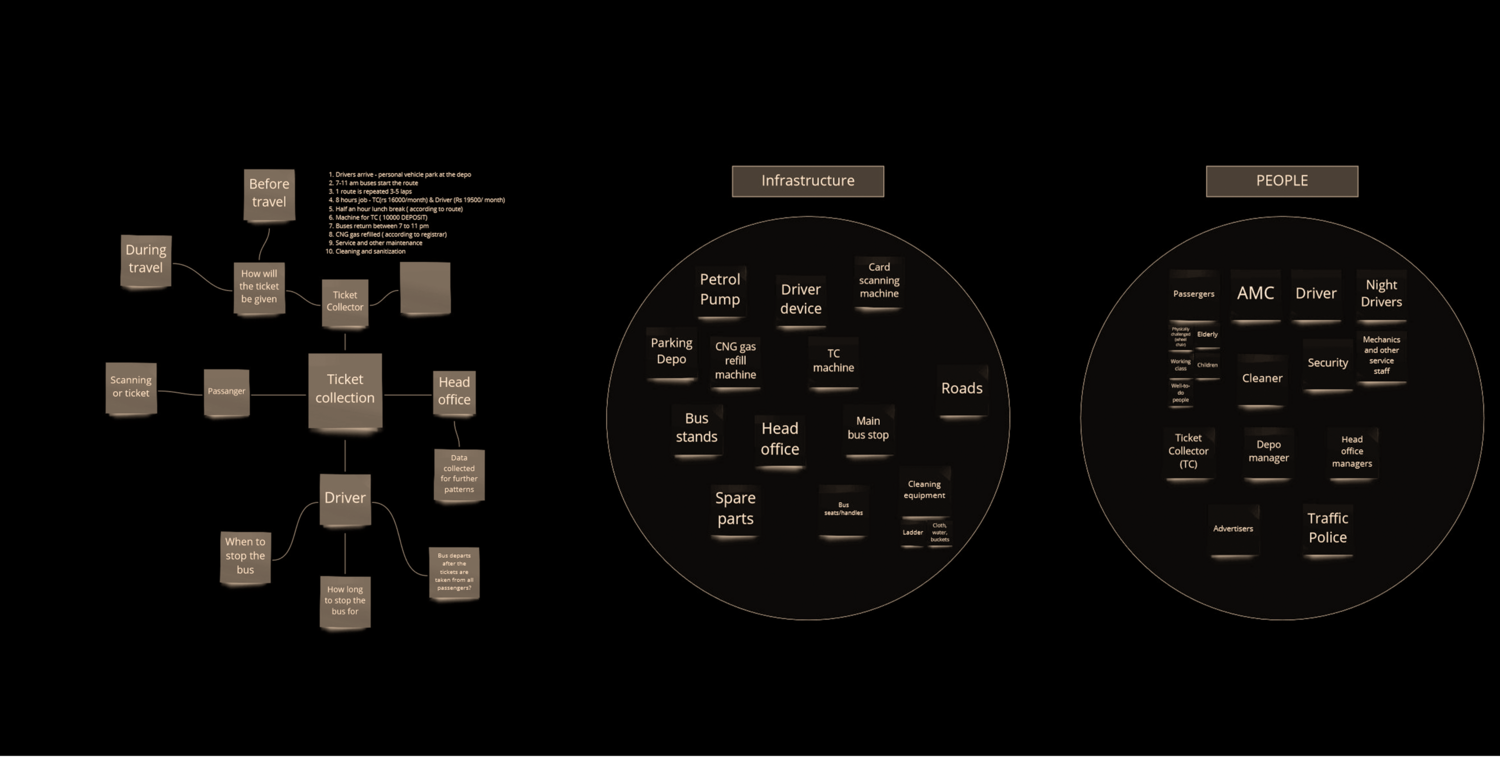
Problem Statement
In the current back-end system, there is a discrepancy between department tasks, the amount of time taken to complete activities (cleaning, gas refueling, maintenance), and efforts made by the staff. Additionally, the flow of buses is not organized which causes chaos and no allotted parking spaces are defined.

System Research
We went to the AMTS office and tried to understand the function of a bus. We took various interviews of bus drivers, ticket collectors, cleaners, various maintenance staff and the security personnel at the bus parking depot. This provided us with the information for the basic system design.
The next thing was to understand the various stops a bus takes in a day, what are the people operating the bus, what are the roles and responsibilities. A common bus route takes 2 hours to complete a circuit, the bus driver takes a 15-minute break and starts again. This goes on till the afternoon after which the driver is changed. The next driver does the same till late in the night. The bus goes into various maintenance modes, washed inside and out, gas is filled and parked.
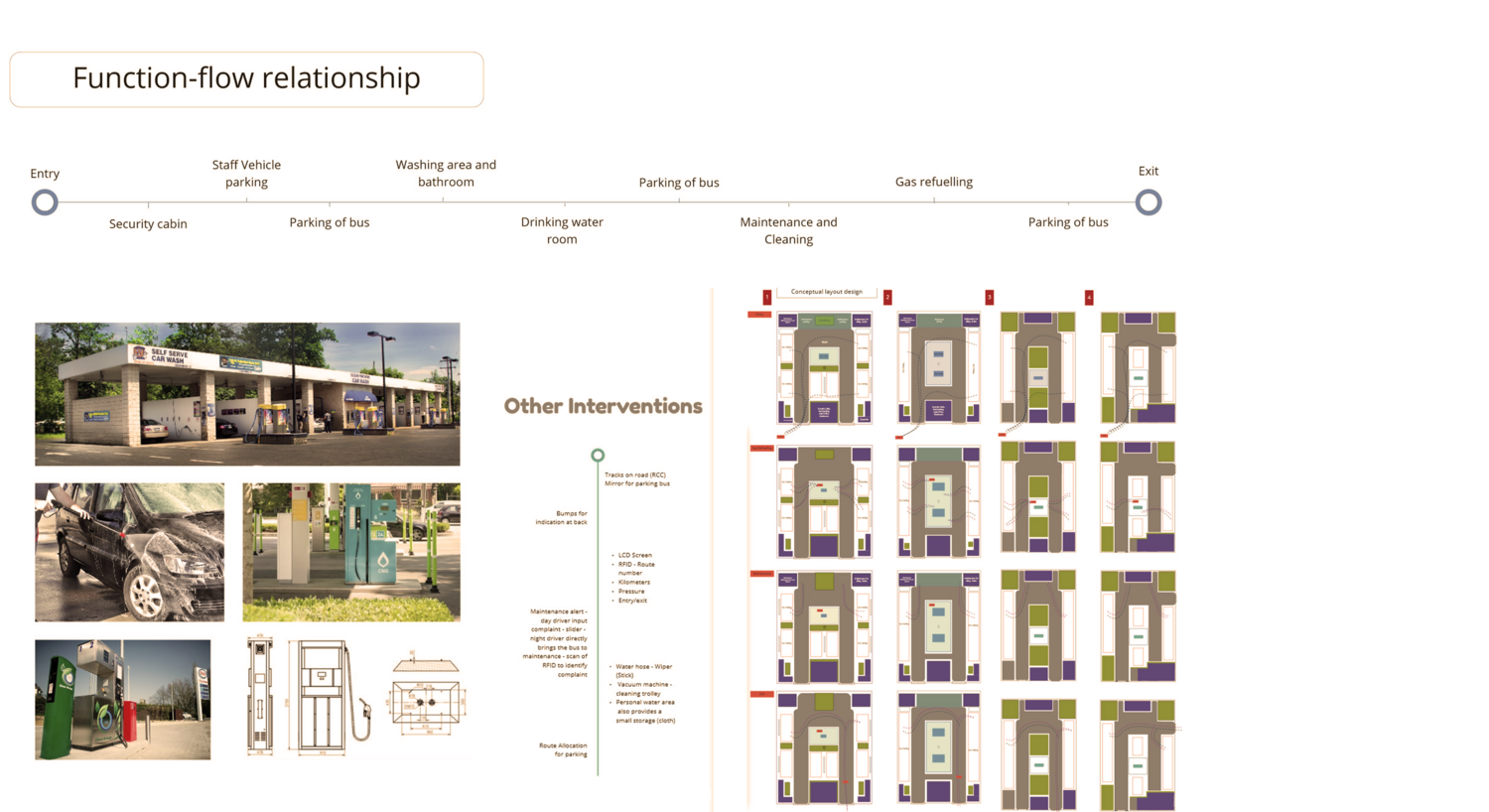
System Intervention
The bus enters the maintenance and parking bay, the bus is parked in the parking bay in a random fashion.
There is no order for maintenance of the bus, the air pressure and condition of the tyres are not a priority of the maintenance crew. There is not a regular check on the non essential parts of the function of the bus, as tail lamps and side lamps.
There is no link between the internal cleaning and the external cleaning crew. The linkage creates a sense of distress.
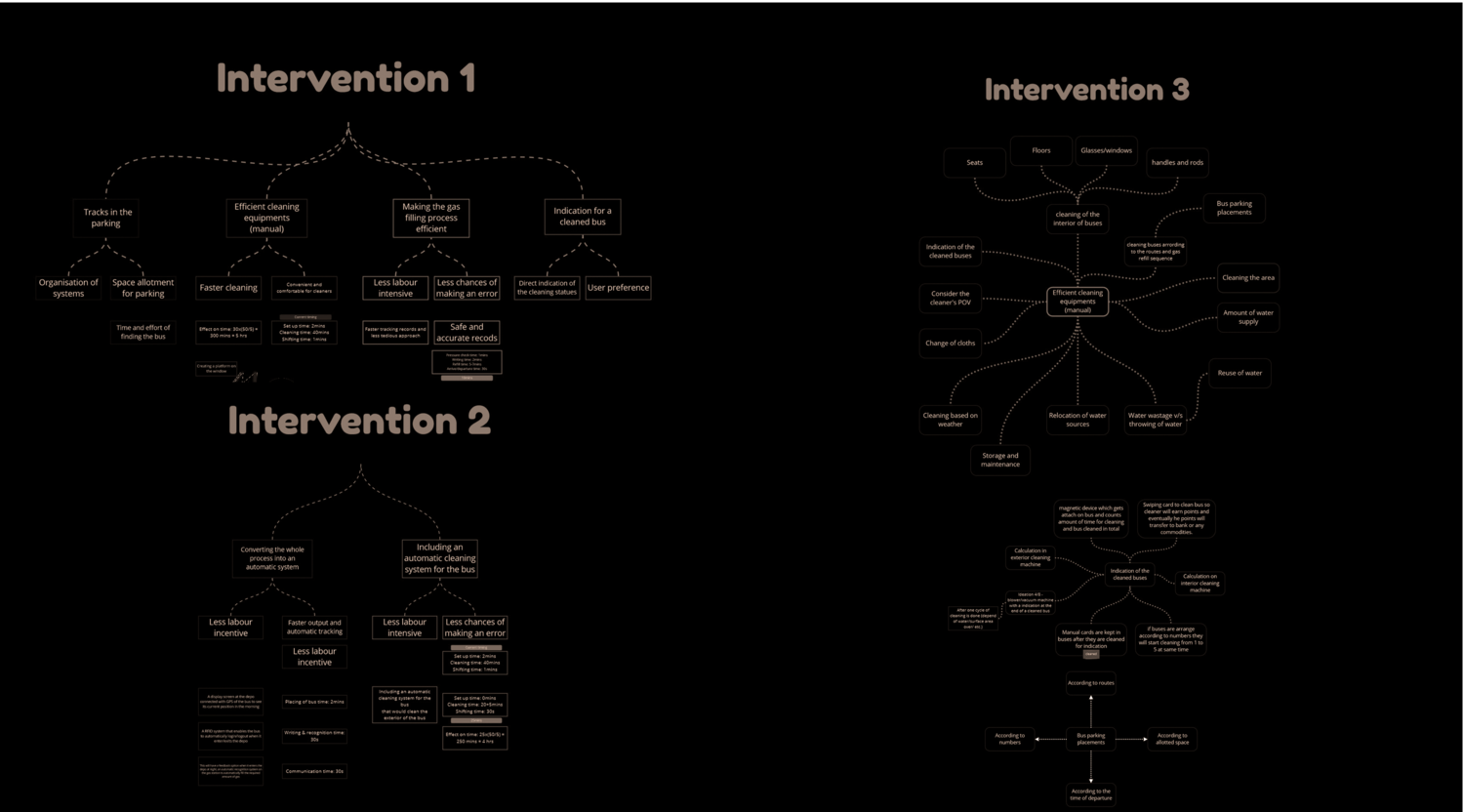
Ideation
The cleaning, maintenance and parking are the core problem areas and are closely interconnected with one another.
There needs to be a basic clean of the vehicle inside and out, gas and tyre pressure checkup and functioning of lamps.
The idea was to make the system efficient, the interventions were coming from various directions.

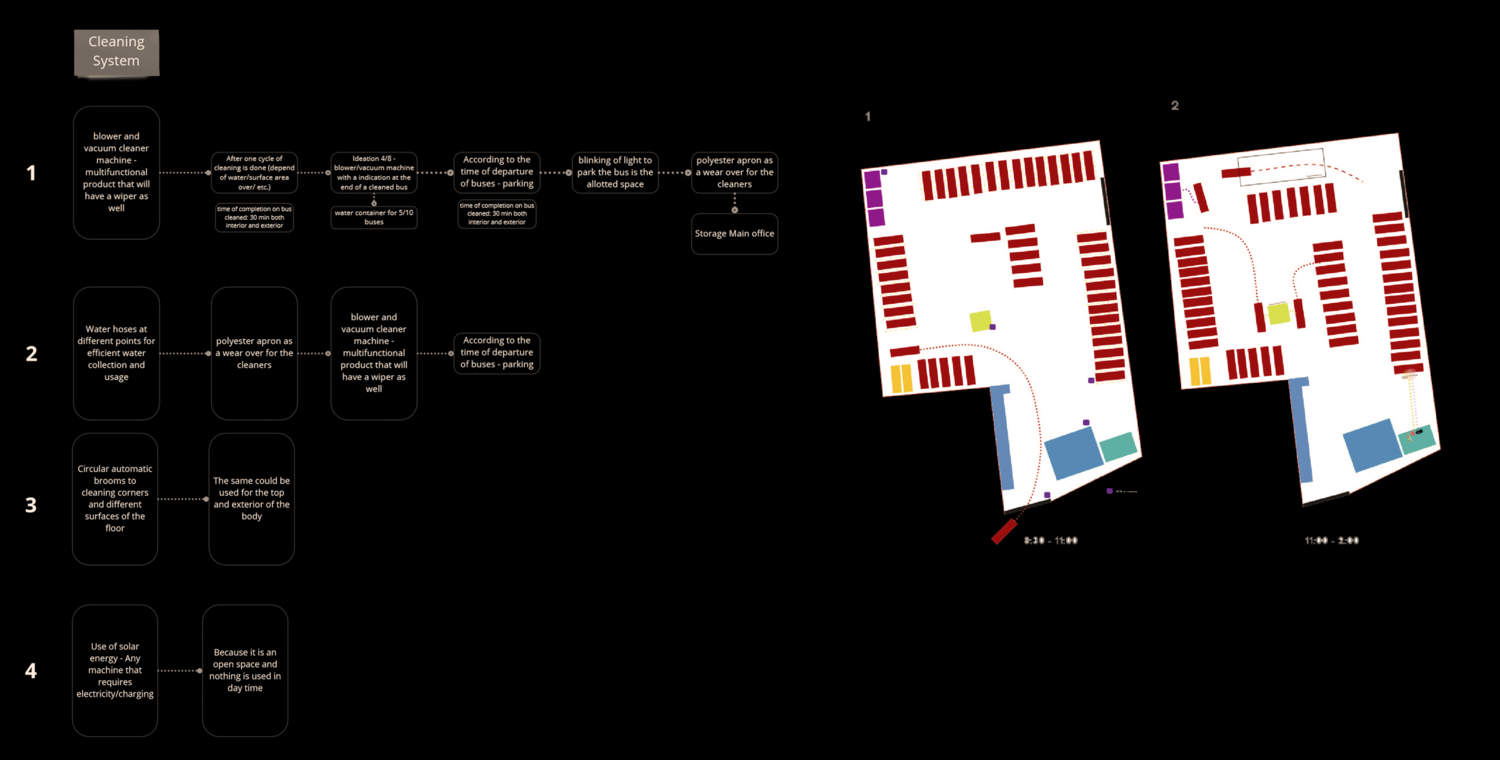
Prototype
The first idea proposal came from a basic root problem, this caused the delay for passengers, drivers, and ticket collectors alike.
The bus parking at the present AMTS depot was a menace, this created a lot of chaos and confusion amongst all. The visibility of the vehicle from a distance is next to impossible.
In the prototype we redesigned a parking and maintenance bay for the bus, this provided the allotted slots for vehicles, decreased confusion, and increased efficiency.
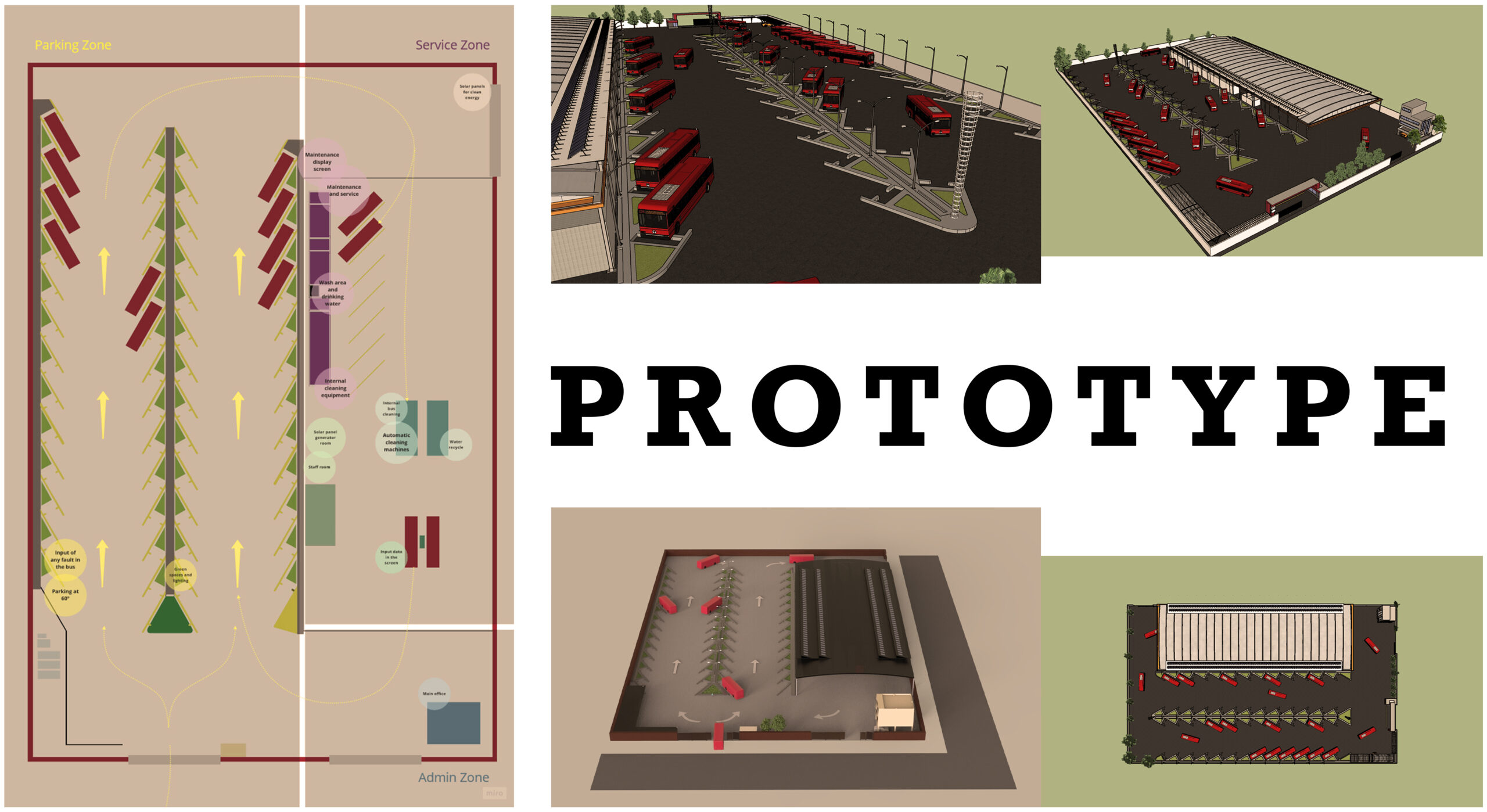
Application
The application provides the basic analysis of the performance of the bus, digitizes the present process followed by the maintenance crew and provides a matrix for improvement parameters and possible faults and easier inventory management.

Key Takeaways
The deep understanding of the function of a bus transport system and a scalable solution for city to interstate transport of buses.
